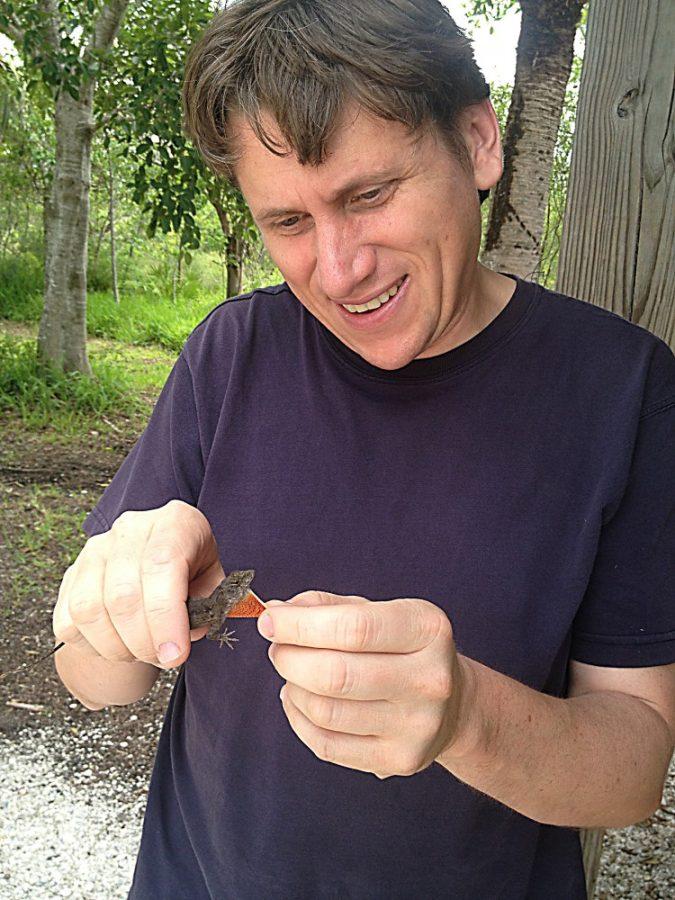A UA researcher has determined that the rate of future climate change will drastically exceed many animal species’ ability to adapt.
In a study recently published in the scientific journal Ecology Letters, John Wiens, a UA professor of ecology and evolutionary biology, along with Ignacio Quintero, an ecologist at Yale University, examined more than 500 extinct species of vertebrates, including mammals, birds and reptiles.
The researchers took into account the rate of “climatic niche evolution,” which is the rate at which a species can adapt to different temperature and precipitation conditions, and compared it to the rate of predicted climate change over the next century.
They found closely related species tend to remain in similar climatic conditions over time, and their climatic niches only change by about 1 degree centigrade per million years, Wiens said. However, future climate models predict that global temperatures will rise by about four degrees by the year 2100.
“So basically, the rate of future climate change is about 10,000 times greater than the typical rate of evolutionary change,” he said. “What that means is that species won’t be able to adapt to climate change quickly enough.”
Although this finding may spell the end for many species, Wiens said that some animals do have options, like moving up a mountain slope where it’s cooler. However, many species, like those living on the tops of mountains, may have nowhere to go, in which case they will be forced to adapt.
“If they have to adapt or die, they might die,” he said.
Wiens said that in a future study, he wants to look at the impact that future climate change will have on plants.
Several UA researchers have conducted a study on the way flowering plants in the Santa Catalina Mountains have been affected by rising temperatures over the past few decades.
The data for their study was provided by Tucson resident and avid hiker Dave Bertelsen, who gathered detailed information on the plants he encountered during his frequent hikes on the Finger Rock trail.
Bertelsen has hiked the 5-mile trail approximately every week since 1984.
“It is absolutely remarkable,” said Theresa Crimmins, an ecologist who is the partnerships and outreach coordinator for the USA National Phenology Network. “It’s one of the richest, most diverse … data set collected by a volunteer on the planet.”
Bertelsen, along with Theresa Crimmins, an ecologist who is the partnerships and outreach coordinator for the USA National Phenology Network and her husband Mike, a climatologist and associate professor in the department of Soils, Water and Environmental Science, published a paper in 2009 analyzing the data set by comparing Bertelsen’s observations in his first 10 years of record to his second 10 years.
They found that most plant species are moving uphill toward cooler temperatures, said Theresa Crimmins, which is significant because it shows that plants are having to adapt to climatic changes even in the relatively short span of 20 years.
Like animal species, Theresa Crimmins said that eventually the plants may reach the top of the mountain and have nowhere to go.
Aside from the possibility of eventual extinction, the shifting of plant ranges could also lead to other problems, she added.
“This might open up spaces for invasive species to take root … or it could shake up plant-pollinator interactions,” she said, noting that changes in plant communities could negatively affect the ecosystem as a whole.
Mike Crimmins said although most climate models predict a four degree centigrade rise in temperature, the number could go up or down based on how humans address the issue of climate change.
“I think it’s human nature, and change is hard … it’s a leadership issue, it’s a policy issue, it’s a lot of things,” he said. “But at the same time I do think that we’re coming around to it. And I do think that changes are afoot.”
According to Wiens, it would be a “tragedy” if human beings’ carelessness led to the extinction of so many species.
“This should be a major cause of concern for humans,” he said, “[and for] life on Earth in general.”









